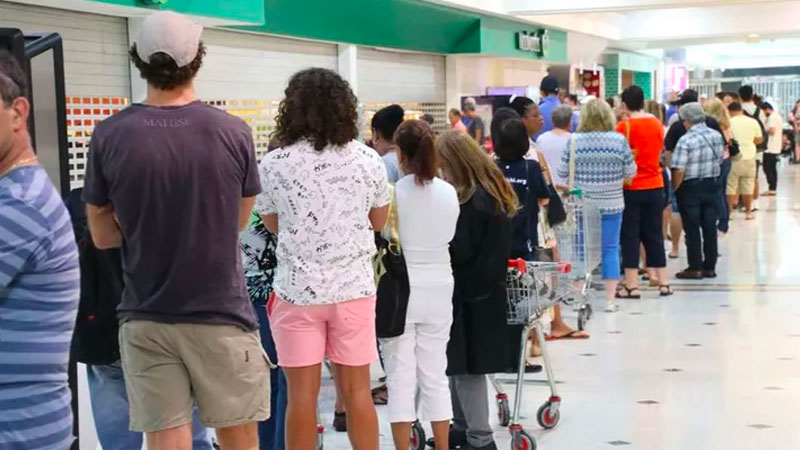Retail Hurts as Stockpiling Boosts Supermarkets
Supermarkets are set for a virus-related retail boost in the wake of panic buying—but the prognosis is poor for non-food retail sectors facing supply chain disruptions and declining foot traffic.
While news that supermarkets and shopping centres are excluded from tighter federal government restrictions on indoor gatherings might help to ease the panic purchasing skewing March retail results for Coles and Woolworths supermarkets, Moody's predicts that supermarkets will continue to benefit from the Covid-19 outbreak, as people stay home and stockpile.
Coronavirus fears and economic uncertainty will continue to impact on the discretionary retail environment, and despite the closure of underperforming stores like Big W and Target, shopping centre footfall will continue to feel the impact of the outbreak, UBS analysts Grant McCasker, Tom Bodor and Sam Merrick said.
The analysts said the long-term structural shift to online retail will accelerate as a result.
ABS retail trade statistics for February recorded a seasonally-adjusted 0.4 per cent rise in retail trade in February, to stand 1.7 per cent higher than a year ago.
The ABS said the rise was largely driven by the food retailing sub industry, with supermarkets recording increases in demand.
Offsetting weakness was seen in the clothing, footwear and personal accessory retailing industry, where—although it was still relatively early days in the Covid-19 crisis—businesses were already reporting adverse impacts from the outbreak.
The ABS results also revealed weakness in the luxury goods and duty free retailing category, where businesses heavily reliant on overseas visitors reported impacts due to travel restrictions.
NAB chief economist Alan Oster said that while retail sales results might have been higher than expected given the strain on the Australian economy, first from the bushfires and then the Covid-19 outbreak, there is "very little to celebrate".
"Panic buying has now set in at supermarkets across Australia.
"While this will boost the headline retail sales figure in March, other retail sectors and consumption spend more generally in areas such as health, education, restaurants and other services - including airlines—face massive challenges," Oster said.
While Moody's predicted the retail sector would also be subject to supply chain disruptions and an inevitable decline in foot traffic with consumers reluctant to shop because of health concerns, an Australian summer dominated by bushfires, hail and storms is proving something of a silver lining for home improvement sales.
The erratic weather that wreaked havoc with properties saw home improvement sales growth in all product categories soar at Bunnings, which Moody's predicts will continue, albeit with potential delays caused by the timing of insurance payouts an the availability of tradespeople.

And regardless of prime minister Scott Morrison's announcement on Wednesday strongly discouraging "the panic purchase of food and other supplies", Commsec's chief economist Craig James said there may not necessarily be a drop-off in food spending in coming months.
In forecasting the retail trade estimates for March - due for release in mid-April, James anticipates higher spending, especially on staples with a longer shelf life.
"Spending at cafes and restaurants is likely to be lower, but there will be some substitution of home delivery and other takeaway demand for in-premises distribution.
"It is likely that Aussies will maintain higher inventories for an extended period," James said.
He added that some retail trade results are proving difficult to predict—for example, Australians may have lifted spending on some electrical and computing items such as monitors, modems, power board as they prepare to work from home.
The RBA and the federal government is expected to monitor a raft of indicators in coming weeks with a view to supporting small and medium-sized businesses in the challenging conditions.















